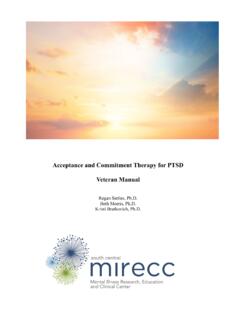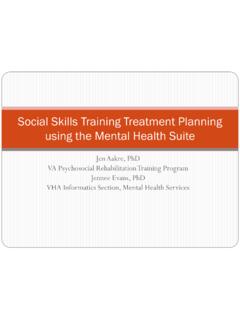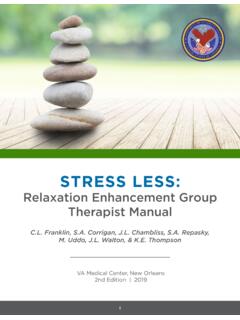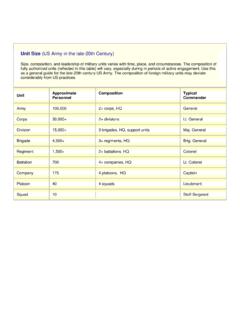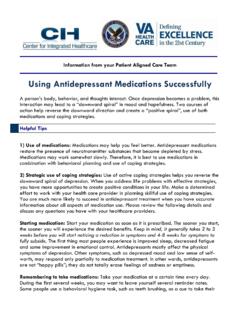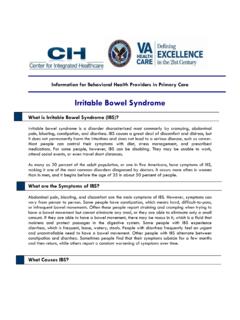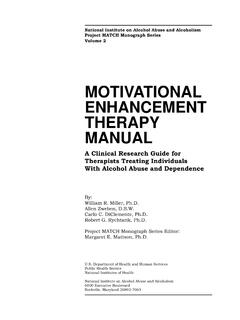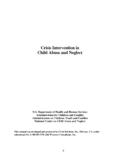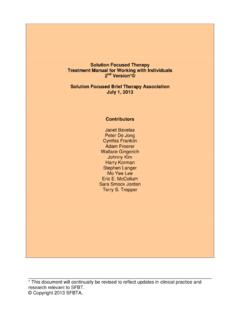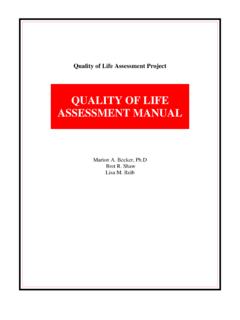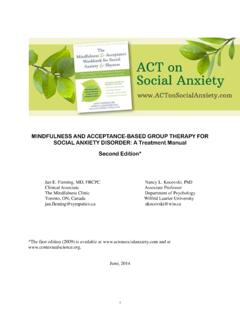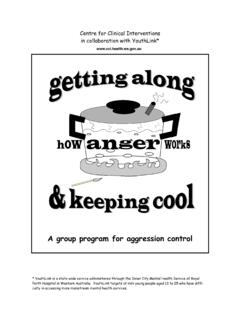Transcription of Cognitive Behavioral Therapy for Psychosis (CBTp) An ...
1 1 Cognitive Behavioral Therapy for Psychosis (CBTp) An Introductory manual for Clinicians Yulia Landa, PsyD, MS Advanced Fellowship Director VISN 2 MIRECC 2 Contents I. Introduction Page 3 II. Modules Page 4 A. overview of CBTp and Therapeutic Techniques Page 4 B. Working with Delusions Page 15 C. Working with Hallucinations Page 19 D. Group Intervention for Delusions and Voices Page 21 E. Working with Thought Disorder and Negative Symptoms Page 22 III. Summary and Applications Page 24 IV. Further Readings Page 25 V. References Page 26 3 INTRODUCTION This manual provides clinicians with an introductory knowledge of Cognitive Behavioral Therapy for Psychosis (CBTp). Developed as a companion to training workshops, it has been created as a reference for mental health professionals as they learn foundational theories and techniques of CBTp, an evidence-based psychological treatment for individuals suffering from psychotic disorders and symptoms.
2 This manual provides information about the history and development of CBTp, clinical research and evidence base for the treatment , and techniques for applying CBTp in individual and group formats to core psychotic symptoms, including delusions, hallucinations, negative symptoms, and thought disorder. At the end of the manual , users will find selected readings and references to deepen their knowledge of CBTp. This manual is intended as a guide for clinicians who are interested in learning about CBTp as a treatment modality for their patients with psychotic symptoms and disorders. The goal of the manual is to provide VA clinicians with a secure knowledge base in CBTp so that they can feel confident in their ability to identify patients who may benefit from CBTp, provide information about the treatment to patients and other clinicians, and make appropriate referrals to existing CBTp services.
3 This manual can also serve as an entr e into CBTp for clinicians who may wish to pursue further training in the CBTp and eventually provide CBTp services. It is important to note that CBTp is a more than just a collection of strategies or techniques, and is rather a comprehensive psychological treatment approach comprised of (1) a comprehensive theory of psychopathology and (2) a detailed description of and guide to therapeutic techniques related to this model (Beck, 1976, 2009). Clinicians who wish to practice CBTp must therefore undergo further training than this manual can provide, so that they can become proficient in CBTp case formulation and treatment approach. That said, the hope is that this manual will provide valuable information to clinicians working with patients with psychotic disorders, as well as new insights and perspectives on the nature and treatment of psychotic symptoms.
4 Clinicians who have been intensively trained in CBTp and those who are currently providing CBTp services may also find this manual useful as a reference point, guide, and refresher to their previous training. Those who are interested in learning more about CBTp, training opportunities for CBTp clinicians, and CBTp services in the VA System should contact: Yulia Landa, PsyD, MS, CBTp Program Director, or Rachel Jespersen, LMSW, CBTp Program Coordinator. 4 TRAINING MODULES This manual is organized into five topic-areas, or modules of study, which align with introductory training workshops for clinicians in CBTp. In the first module, information about the development, research base, underlying theories, and therapeutic techniques is presented. The second module provides information about CBTp theory and techniques for working with delusions and the third provides information about working with hallucinations.
5 The fourth module expands on these topics by providing information about CBTp group protocols to treat delusions and hallucinations. The fifth module covers treating negative symptoms and thought disorder with CBTp. A. overview of CBTp and Therapeutic Techniques A1. History of CBTp and Current State Cognitive Behavioral Therapy for Psychosis (CBTp) is an evidence-based treatment approach shown to improve symptoms and functioning in patients with psychotic disorders. CBTp aims to enhance function despite difficult symptoms and experiences such hallucinations, negative symptoms, thought disturbances, and delusions. CBTp forms a collaborative treatment alliance in which patient and therapist can explore distressing psychotic experiences and the beliefs the patient has formed about these experiences, with the goal of reducing distress and disability caused by these experiences.
6 CBTp is a structured, time-limited, and goal-based treatment modality. CBTp can be delivered in individual and group modalities, has long-lasting benefits after the termination of Therapy , and is cost effective. CBTp was developed by Dr. Aaron Beck, an American psychiatrist who is largely regarded as the father of Cognitive Behavioral Therapy . The first documented application of CBT to psychotic symptoms was Beck s outpatient treatment of chronic schizophrenia patients with delusions, published in 1952(Beck, 2009). Clinician-scientists in the UK especially began to study the effectiveness of CBTp, and in 1994 the first clinical trial of CBTp was published (Garety, Kuipers, Fowler, Chamberlain, & Dunn, 1994). Within the last 15 to 20 years, CBTp has gained traction in the United States as the intervention has become manualized and more widely applied (Chadwick, Birchwood, & Trower, 1996; Fowler, Garety, & Kuipers, 1995; D.)
7 Kingdon, Turkington, & John, 1994). Currently, there are more than 40 randomized clinical trials and multiple meta-analyses of these trials published. CBTp is a clinically validated intervention for Psychosis , with research indicating a 20-40% reduction in distress related to psychotic symptoms when CBTp is employed in conjunction with medications, and 50-65% of patients displaying reduced symptomology when treated with CBTp Figure 1: Aims of CBTp 5 (R. A. Gould, Mueser, Bolton, Mays, & Goff, 2001; Pilling et al., 2002; Wykes, Steel, Everitt, & Tarrier, 2008). Furthermore, studies have indicated that treatment with CBTp is related to improvements in therapeutic relationships, changes in beliefs about self and others, changes in reasoning style, improvements in functioning, and learning to cope among people with Psychosis (R.
8 A. Gould et al., 2001; Pilling et al., 2002; Wykes et al., 2008). A study which compared the efficacy of CBTp to befriending interventions in medication-resistant schizophrenia demonstrated that both interventions significantly reduced positive, negative and depressive symptoms, but that there was sustained improvement at follow-up seen with CBT only (Sensky et al., 2000). CBTp has been recommended as a frontline treatment in treatment guidelines for schizophrenia published by the American Psychiatric Association (APA), Patient Outcomes Research Team (PORT), and the National Institute for Health and Care Excellence (NICE) in the United Kingdom. American Psychiatric Association persons with schizophrenia who have residual psychotic symptoms while receiving adequate pharmacotherapy may benefit from Cognitive behaviorally oriented psychotherapy.
9 (Lehman et al., 2004) Patient Outcome Research Team persons with schizophrenia who have persistent psychotic symptoms while receiving adequate pharmacotherapy should be offered adjunctive Cognitive behaviorally oriented psychotherapy to reduce the severity of symptoms. The Therapy may be provided in either a group or an individual format and should be approximately 4 9 months in duration (Dixon et al., 2010; Kreyenbuhl, Buchanan, Dickerson, Dixon, & Schizophrenia Patient Outcomes Research, 2010) National Institute for Health and Clinical Excellence guidelines - CBT should be offered to all patients with schizophrenia. This can be started either during the acute phase or later, including inpatient stay. (National Institute for Health and Clinical Excellence, 2009) A2.
10 Theoretical Models of Psychosis and CBTp The ABC Model: CBT works by (1) collaboratively identifying problems that are most troublesome, (2) looking at how a person tends to think about them ( thinking habits ), (3) looking at how a person reacts to them ( behaving habits ), (4) considering whether or not these thinking and behaving habits are unrealistic or unhelpful and deciding whether there are other ways of thinking or reacting that would be more helpful in solving the issue, and (5) ultimately trying out these new ways of thinking and behaving, and choosing the ones that work. CBT operates on the principle that an individual s emotional reactions are determined by their perception of events (Beck s Model of Emotional Difficulties).
